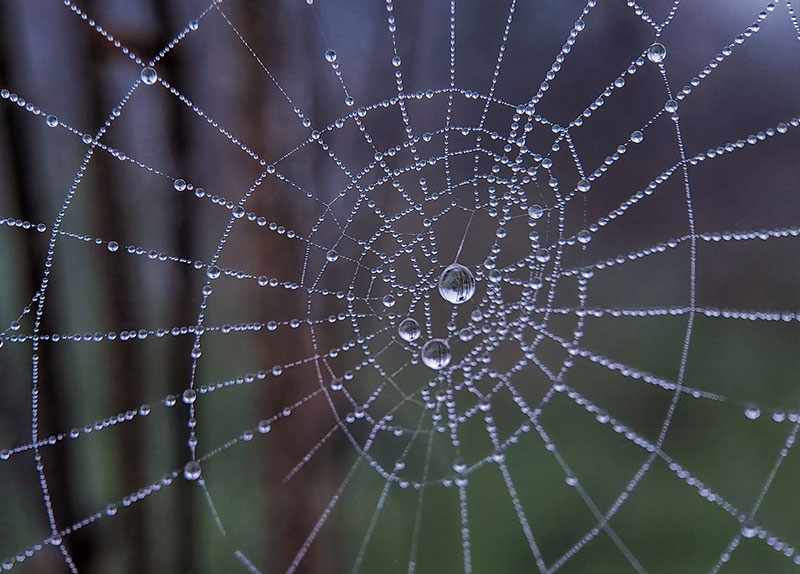
Spiders spin their webs using silk, one of the world’s strongest and most versatile natural materials. It is lighter than cotton while simultaneously being tougher than steel. Spiders can manipulate many of this material’s properties to an incredible degree. Depending on what they intend to use their webs for, spiders can control how sticky their webs are and the strength of the silk. Different species also produce silk with different characteristics and uses. For instance, golden silk orb-weavers (found in warm regions worldwide) spin webs with a golden sheen. Meanwhile, spiders in the U.K. tend to produce white or blue-tinted silk.
So, how do spiders spin their silk? On their stomachs, they have something called spinnerets. These are organs that they use to spin silks. The number of spinnerets varies depending on the species, but most have a cluster of them. While inside the spider, the silk is liquid. It is pulled out either by gravity or by the back leg of the spider, which then follows various patterns of activity to construct its web.
Most spiders rely on their ability to feel vibrations in their webs to know if they’ve caught their prey because they have terrible eyesight. If they miss that signal, they pluck various areas of their webs to feel the waves along those threads and determine whether they caught something. Spiders will even change the features and tension of their threads to increase their chances of catching prey. They tune their webs, not unlike how humans would tune a guitar or violin. Every day, they’ll adjust the tension in their webs to adapt to changes in the weather, such as humidity levels, wind speed, or temperature.